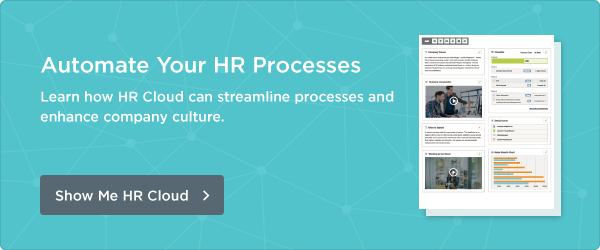
 Try
Out
Our
Try
Out
OurEmployee Engagement Software For Free

We’ve all had an experience that we weren’t quite sure really belonged on our resume. From a short stint at a retail store to an online degree program that doesn’t appear to be very prestigious. We question the need to actually include some of these details and wonder how much information is really necessary to the job we’re applying for.
Best practice is to list everything that is relevant and account for any gaps. Honesty is always the best policy, especially considering that most companies conduct background checks that typically find everything you may be trying to hide.
But, from an HR perspective, the question becomes, “Does my initial opinion of a resume reflect bias?” For example, does a candidate’s former employment with a poorly rated company affect his chance to work for your company? With recruiters spending an average of 6 seconds on a resume, it’s easy to get caught up on “sketchy” past employers and toss aside those resumes with a less notable college or university listed. Two things.
First, Slow Down
The talent pool is shallow. Searching for the best candidate is not an easy feat and having to share candidates with your competitors… well, that’s not fun either. If recruiters are spending teeny amounts of time reviewing resumes, think about what you may be missing out on. Quick glances help us search for and focus on key words, however, it’s pretty apparent we will skip over something that could be quite useful and beneficial to the organization. When you’re competing for the best, sometimes it’s better to be more efficient and thoughtful. Review resumes and online profiles with more diligence. Look for creativity and the potential for new insight and leadership. After all, you’re looking for someone who will move your company along and help you compete in your industry.
Reviewing candidate profiles can be tedious and stressful. It takes time, so we speed up the process by using key words to narrow the playing field. However, changing your review process to be more thoughtful and calculated can pay off in the long run. Consider the following example: Java, SharePoint and Cloud-based technologies are very much in demand right now. Candidates may not always list their work experiences in detail. They may leave out key words and write things in a broad manner. If I were skimming a resume quickly, I may catch one or two key words, but I also may miss the story behind the resume. I may miss valuable details and pass on a candidate who has a great deal of experience but has little knowledge on how best to sell his abilities on paper. Remember, you’re hiring a person. Not a piece of paper.
Take your time and understand the position. Review the resume. Account for the key skills you’re looking for and find out the back story. If you have concern regarding any information you’ve learned—a previous employer with terrible customer service history or an online degree program you’ve never heard of—just ask. Pick up the phone or write a message. Talk to the candidate.
Second. Diversify and Qualify
Hiring a team of sales associates? That may be a straightforward hire. Your job description is most likely clear and concise and it allows you to qualify the resumes you receive. You’ve also probably experienced turnover in this role, so you’re familiar with the skill sets you need to allow for a successful hire. However, if you’re hiring for a director of treasury or a graphic artist, you may not hire for those roles as often and will really need to rely on the job description. You’ll want to qualify your candidates, but you’ll also want to think about the status of this role now and where you want it to be in the next 6 months to a year.
Diversify your hires. Think strategically about where you want the role to go, and hire for potential, not just what’s on the resume. When we focus on skill alone, we may miss out on the opportunity to hire those that have the ability to not only perform the job as indicated but to also take the job to another level. When people are motivated and have the ability to stretch themselves, their individual impact is significant. By hiring for potential, in addition to skill level, you diversify your team which yields high performance and creates innovative ideas.
We all have bias. It’s normal. We perceive things differently than the person sitting next to us. Take your time when looking for the right talent. Don’t skim resumes at 6 seconds a clip. Slow down; remove your bias; look beyond the key words, and let the candidate tell the story of their professional success.
Keep Reading
Benefits of Having a Company Intranet
Company intranets have been a part of corporate life since the mid-'90s. But in the last
Top 8 Workvivo Alternatives for 2024
Meta recently announced that it is shutting down its employee communications tool







